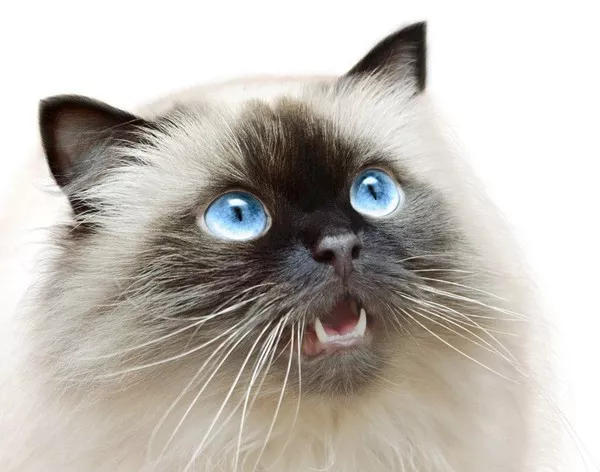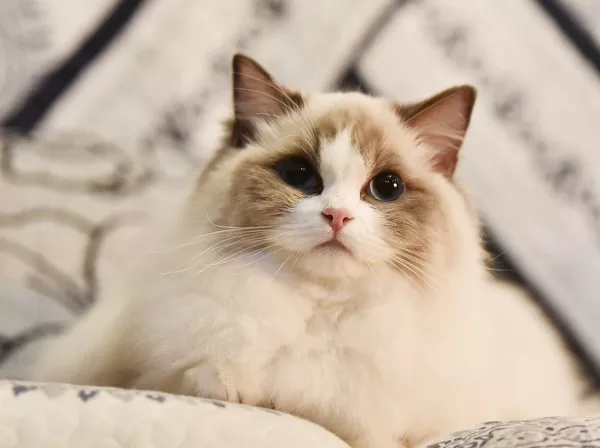Himalayan cats, with their striking blue eyes and luxurious fur, are renowned for their beauty and elegance. Often described as a cross between Persian and Siamese breeds, Himalayans possess a unique combination of traits that make them beloved companions for cat enthusiasts. One common perception of Himalayan cats is that they are quiet and serene, but is this stereotype accurate? In this article, we delve into the temperament of Himalayan cats, examining their behavior, communication style, and whether they live up to their reputation as quiet companions.
Understanding the Himalayan Cat Breed: Origins and Characteristics
1. A Blend of Persian and Siamese Traits
Himalayan cats are a breed that originated from a cross between Persian and Siamese cats, resulting in a distinctive appearance characterized by a long, silky coat, striking blue eyes, and a compact body. Like their Persian ancestors, Himalayans have a gentle and affectionate demeanor, while also inheriting the vocal tendencies of Siamese cats.
2. Physical Features and Coat Colors
The Himalayan breed is known for its pointed coloration, with darker coloring on the ears, face, paws, and tail, and lighter coloring on the body. Their coat comes in a variety of colors, including seal, blue, chocolate, lilac, and more. With their fluffy fur and regal appearance, Himalayans are often likened to living works of art.
Example of Breed Characteristics:
Himalayan cats are known for their sweet and loving nature, often forming strong bonds with their human companions. They enjoy being around people and thrive in environments where they receive attention and affection. Additionally, Himalayans are known for their calm and composed demeanor, making them well-suited for indoor living.
The Communication Style of Himalayan Cats: Vocal or Quiet?
1. Meows and Vocalizations
Like their Siamese ancestors, Himalayan cats are known for their vocal nature and are not typically considered “quiet” in the traditional sense. They are capable of producing a variety of vocalizations, including meows, chirps, and trills, to communicate their needs, desires, and emotions to their owners.
2. Quiet Moments
While Himalayan cats can be vocal when they want attention or are feeling playful, they are also known for their quiet and serene moments. Himalayans enjoy lounging in sunny spots, grooming themselves, and observing their surroundings with a calm and composed demeanor, giving the impression of quiet elegance.
Example of Vocalization:
A Himalayan cat may vocalize to greet their owner when they come home, request food or treats, or express their desire for attention or playtime. However, compared to breeds like the Siamese, Himalayans tend to have a softer and more melodious voice, which some owners find less intrusive.
Temperamental Factors: Individual Variations in Personality
1. Personality Traits
While Himalayan cats are known for their overall gentle and affectionate nature, individual personalities can vary among cats of the same breed. Some Himalayans may be more vocal and outgoing, while others may be quieter and more reserved. Factors such as socialization, environment, and upbringing can influence a cat’s temperament and behavior.
2. Socialization and Environment
Early socialization plays a crucial role in shaping a Himalayan cat’s personality and behavior. Cats that are exposed to a variety of people, animals, and experiences from a young age are more likely to develop into confident and well-adjusted adults. Additionally, a calm and stable home environment can contribute to a cat’s sense of security and contentment.
Example of Personality Variations:
One Himalayan cat may enjoy lounging in the sun and observing the world from a quiet corner of the house, while another may seek out interaction and playtime with their human companions. Understanding and accommodating individual personality differences is key to fostering a harmonious relationship with a Himalayan cat.
Conclusion: The Quiet Elegance of Himalayan Cats
In conclusion, while Himalayan cats are often described as quiet and serene companions, their vocal nature and individual personality traits can vary among individuals. While they may not be as vocal as breeds like the Siamese, Himalayans are capable of communicating their needs and desires through a variety of vocalizations, gestures, and body language.
Ultimately, the temperament of a Himalayan cat depends on a combination of genetic factors, socialization experiences, and environmental influences. Whether they are quietly observing their surroundings or engaging in playful antics with their owners, Himalayans bring a sense of grace, elegance, and charm to any household, enriching the lives of their human companions with their loving presence.
FAQs:
1. Are Himalayan cats loud?
Himalayan cats are known for their sweet and melodious voices but are generally not considered loud. They possess a gentle and soft-spoken demeanor, often expressing themselves with quiet chirps or soft meows. While they may vocalize to communicate their needs or desires, Himalayan cats typically do so in a manner that is more soothing than disruptive, making them suitable companions for those who prefer quieter pets.
2. Are Himalayan cats calm?
Yes, Himalayan cats are renowned for their calm and affectionate nature. Bred from a combination of Persian and Siamese breeds, they inherit the Persian’s placid temperament and the Siamese’s social tendencies. Himalayans tend to be relaxed, gentle, and even-tempered, enjoying lounging in the comfort of their home or cuddling with their human companions. Their serene disposition makes them excellent lap cats and ideal companions for families, as they are often tolerant of children and other pets, contributing to a harmonious household environment.
3. What is the attitude of a Himalayan cat?
Himalayan cats are characterized by their affectionate and docile attitude. They are known for being loving and devoted companions, forming strong bonds with their owners. Himalayans thrive on attention and enjoy being close to their human family members, often seeking out affectionate interactions and cuddle sessions. While they may exhibit some independent behavior, they generally prefer the company of their loved ones and may become lonely or anxious if left alone for extended periods. With their gentle demeanor and loving disposition, Himalayan cats bring warmth and joy to any home they inhabit.
























